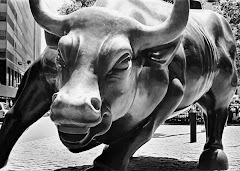Introduction
Ratios are basic tools of interpretation of financial statements as the objective is to compare figures between companies or for the same company over several years.
- Compare performance from year to year.
- Compare performance of different companies in the same industry.
- Collect data on a systematic basis which allows trends to merge and thus allows predictions to be made.
This is an important step in evaluating a company’s fundamental.
1) Liquidity Ratios
Liquidity ratio measures a company's financial position, i.e. the balance sheet. It gives indication of the short-term financial strength or solvency of the film. We want to know whether a company is able to meet its debt obligation when it falls due. Ww can use this ratios to assesse whether a company's going-concern.
1.1) Current/working capital ratio
This ratio is a test of solvency, i.e. it measures the firm's ability to meet its current obligations on time and to have funds readily available for current operations. It compares assets that will be due for payment in the same period. Conventionally, ideal current ratio is 2:1. Certain business will naturally have higher/lower current ratio. A jewellery shop usually has very high current ratio whilst a fruit seller generally has very low ratio.
current assets/current liabilities
1.2) Acid test/quick/liquid ratio
From the current ratio, we want to focus only on assets that are cash or can be converted into cash very quickly. Inventory is excluded because they are usually not convertible into cash to pay debts on short notice. Receivables can be used to obtain factoring or invoice discounting to meet company's cash needs. An ideal quick ratio is 1:1. A firm may have an acceptable current ratio but if acid test ratio falls below 1, it indicates that most of its current assets is in the form of inventory.
(cash + marketable securities + receivables)/current liabilities
1.3) Cash ratio
This is the most conservative liquidity measure, a more precise indicator of a firm's ability to meet current debts. It shows the amount of cash available for meeting immediate payments.
(cash + marketable securities)/current liabilities
1.4) Inventory turnover ratio
The ratio indicates the number of times the inventory is sold and replaced during the year. Firm will try to get as higher inventory turnover as possible. Different businesses will have different inventory turnover. Those in food industries will have a higher inventory turnover then those in the automobile.
(ave. inventory/cost of sales) x 365
Ratios are basic tools of interpretation of financial statements as the objective is to compare figures between companies or for the same company over several years.
- Compare performance from year to year.
- Compare performance of different companies in the same industry.
- Collect data on a systematic basis which allows trends to merge and thus allows predictions to be made.
This is an important step in evaluating a company’s fundamental.
1) Liquidity Ratios
Liquidity ratio measures a company's financial position, i.e. the balance sheet. It gives indication of the short-term financial strength or solvency of the film. We want to know whether a company is able to meet its debt obligation when it falls due. Ww can use this ratios to assesse whether a company's going-concern.
1.1) Current/working capital ratio
This ratio is a test of solvency, i.e. it measures the firm's ability to meet its current obligations on time and to have funds readily available for current operations. It compares assets that will be due for payment in the same period. Conventionally, ideal current ratio is 2:1. Certain business will naturally have higher/lower current ratio. A jewellery shop usually has very high current ratio whilst a fruit seller generally has very low ratio.
current assets/current liabilities
1.2) Acid test/quick/liquid ratio
From the current ratio, we want to focus only on assets that are cash or can be converted into cash very quickly. Inventory is excluded because they are usually not convertible into cash to pay debts on short notice. Receivables can be used to obtain factoring or invoice discounting to meet company's cash needs. An ideal quick ratio is 1:1. A firm may have an acceptable current ratio but if acid test ratio falls below 1, it indicates that most of its current assets is in the form of inventory.
(cash + marketable securities + receivables)/current liabilities
1.3) Cash ratio
This is the most conservative liquidity measure, a more precise indicator of a firm's ability to meet current debts. It shows the amount of cash available for meeting immediate payments.
(cash + marketable securities)/current liabilities
1.4) Inventory turnover ratio
The ratio indicates the number of times the inventory is sold and replaced during the year. Firm will try to get as higher inventory turnover as possible. Different businesses will have different inventory turnover. Those in food industries will have a higher inventory turnover then those in the automobile.
(ave. inventory/cost of sales) x 365
1.5) Receivable turnover ratio
Shows the number of times the debts are collected during the year. It indicates the promptness with which debtors meet their obligations and also measures the efficiency of the firm in collecting its debts and the credit policy of the firm. The higher the turnover, the better it is as debtors are effectively borrowing from the company.
(receivables/credit sales) x 365
Shows the number of times the debts are collected during the year. It indicates the promptness with which debtors meet their obligations and also measures the efficiency of the firm in collecting its debts and the credit policy of the firm. The higher the turnover, the better it is as debtors are effectively borrowing from the company.
(receivables/credit sales) x 365
1.6) Payable turnover ratio
Shows the rate at which suppliers are being paid for goods purchased. Might be good in that it means that all available credit has being taken.
(ave. payables/cost of sales) x 365
1.7) Cash conversion cycle
The length of time it takes to turn the firm’s investment into cash.
ave. receivables collection period + ave. inventory processing period - payable amount period
2) Profitability Ratios
These ratios measure the firm’s financial performance, i.e. its profits and losses. The ratios show the profitability of the products/services of the firm and the efficiency of using the firm's resources (capital employed) in earning profits.
2.1) Gross profit margin
This ratio indicates the efficiency of operations as well as how products are priced.
(gross profit/sales) x 100%
2.2) Operating/net profit margin
Indicates how well a company is controlling its costs. Net profit is the pre-tax operation (before interest and any non-trading income) as a percentage of sales. Operating profit refers to profit before financial expenses.
Operating Profit Margin = (PBIT/sales) x 100%
Net Profit Margin = (net profit/sales) x 100%
2.3) Return on capital employed
This ratio measure how much profit has been generated with the money (capital) from the investors. An increase in ROCE is good for shareholders, since more profit is generated by the capital in the business. This will result in more distribution of dividends or more investment in making the business more profitable.
Return on total equity = (net profit/average shareholders' funds) x 100%
3) Financial risk / gearing
Leverage means that a company obtain financing for its investments from sources other than owners, i.e. borrowed money. Unlike equity financing, debt financing requires a fixed payment of interest, regardless of the profit level.
3.1) Gearing ratio
Gearing refers to the relationship between long-term borrowing and shareholders' funds. A highly geared firm is one where large proportion of its funds is obtained through borrowing rather than the issuing of shares. As gearing increases, company's ability to pay dividends comes into question as interest payment is compulsory. If a company default on its debt obligation, then the debtors will bring the company to the court. There is no absolute rule on safe gearing ratio, but as a general guide, 50% or less can be regarded as safe debt. Similarly, there are a few definition of gearing ratio.
Debt-equity ratio = (long-term debt/total equity) x 100%
Long-term debt/total capital = (long-term debt/total capital) x 100%
3.2) Interest coverage ratio
Concerns with the fixed compulsory interest charges resulting from firm's debts. High level of interest coverage is good as shareholders are confident that profit is sufficiency to pay interest and their dividends.
NP before int & tax/int payment
4) Investment ratios
These ratios are constantly used by investors and shareholders to calculate the return on their investment or as a guidance on investment decisions.
4.1) Earning per share
The importance of EPS is because it formed part of the calculation of PE ratio. And PE is a very important ratio to investors and analysts. EPS represents the number of dollars earned on each of the ordinary share.
NP after int & tax before extraordinary items/no. of ordinary shares
4.2) Price earning ratio
Regarded as the most important investment ratio. It is a measure of relationship between market value of a company's shares and earning from those shares. It reflects market's appraisal of the share's future prospects. Company with higher PE ratio than others is because investors either expect its earning to increase faster then others' or consider that it is a less risky company. Remember during dot.com booms, most internet or related companies had PE of a few hundreds time, or even higher. Since the beginning of 2007, with the recovery of construction industry in Singapore, many construction companies are price at hundred times PE.
If prospect of company is good, share price will rise and PE will rise. Whether PE is better to be high or low differs. From company and existing shareholders' point of view, high PE is good, indicating strong market expectation on the company future prospect. It also means rising share prices. From potential investors' point of view, high PE may not be good as it indicates a high share value, if not over-value.
market price per share/EPS
4.3) Dividend yield
Certainly, investors are not putting their money on a company for free. Dividend yield tells ordinary shareholders how much return they have received from the investment in the company's shares. Company with sustainable higher yield is always a good investment especially in time of turbulence.
(dividend per share/market price per share) x 100%
4.4) Price-to-book ratio
This ratio compares a company's book value (or net assets) to its current market price. Book value is a company's total assets less its total liabilities. As with most ratios, be aware this varies a fair amount by industry. Industries that require higher assets investment tends to trade at P/B much lower than a service company. Investment in company with low P/B ratio is always a winning strategy in the long-run.
current market price/Net assets per share
or,
market capitalization/net assets
5) Growth analysis
Everyone knows that before Warren Buffett put his money into a company, he will first evaluates and ascertain the target company’s growth prospect. Investing in a growth (and under-valued) company is always a guaranteed winning strategy. You may have heard people saying that long-term investment in Coca Cola produces millionaires?
Retention rate = 1 - (dividend declared/operating income after tax)
Sustainable growth = retention rate x ROE
Conclusion
Ratio analysis on its own is insufficient for evaluating a company’s accounts and fundamental. There are other factors to consider. For example, a company’s order book, branding, market share, general industry development etc. In addition, the ratios must be use with great care. For example, a fruit-seller will have different requirements for liquidity ratio then a car seller. There is also other information which should be looked at:
- Age and nature of company's assets.
- External auditor's report
- Current and future developments in the company's markets, at home and overseas.
- Recent acquisitions or disposals of a subsidiary by the company.
- Nature and levels of financial obligations.
- Cash flow statement.
- Current and future developments in the company's markets, at home and overseas.
- Recent acquisitions or disposals of a subsidiary by the company.
- Nature and levels of financial obligations.
- Cash flow statement.




No comments:
Post a Comment